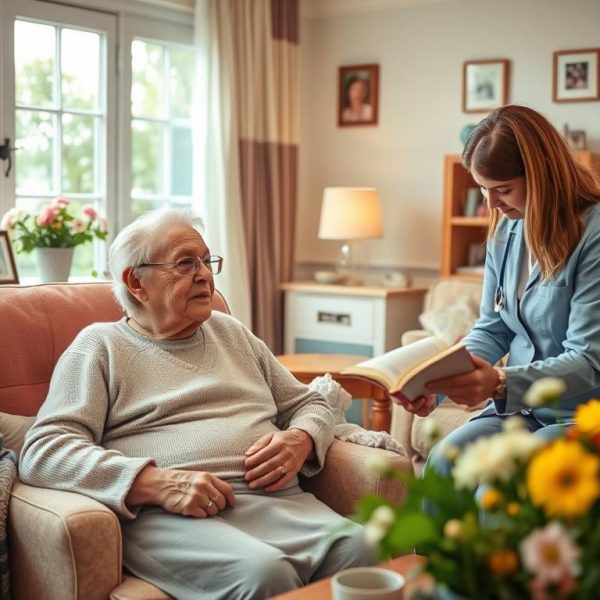Margaret had always been an active person. Now in her early 70s, she still enjoyed taking long walks and gardening in her backyard. However, after a recent health scare involving her heart, Margaret knew it was time to take a more structured approach to her fitness routine—especially when it came to cardio training. Like many seniors, she was concerned about how to exercise safely while keeping her heart rate goals in a healthy range.
Her doctor had encouraged her to include more cardiovascular activities like walking, cycling, or even swimming in her daily routine. But Margaret had one big question: How could she know if she was pushing herself too hard or not hard enough? Setting clear heart rate goals became the answer, and this step-by-step guide helped her design a safe, effective cardio training plan that was personalized to her health needs.
This guide will walk you through the process of setting heart rate goals for senior cardio training, helping you or a loved one like Margaret exercise with confidence and purpose.
Step 1: Understanding Maximum Heart Rate and Target Heart Rate Zones
Before Margaret could begin her cardio journey, she needed to understand what her maximum heart rate was. The maximum heart rate (MHR) is the upper limit of what your cardiovascular system can handle during physical activity. It is calculated by subtracting your age from 220. For example, at 70 years old, Margaret’s maximum heart rate was approximately 150 beats per minute (bpm).
However, she didn’t need to push her heart to this extreme. Instead, she aimed for her target heart rate zone, which is a percentage of the MHR and indicates the safe and effective range for cardiovascular exercise. For seniors, this zone typically falls between 50% and 70% of their maximum heart rate, depending on their fitness level and overall health.
For Margaret:
- 50% of her MHR = 75 bpm
- 70% of her MHR = 105 bpm
This range gave Margaret a baseline to work with, ensuring her heart wasn’t overworked while still providing enough intensity for heart health benefits.
Step 2: Consulting with a Healthcare Provider
Margaret’s first priority was safety, so she spoke with her healthcare provider before starting any new exercise program. This is a crucial step for all seniors, especially those with pre-existing health conditions such as hypertension, diabetes, or past heart issues. Her doctor reviewed her heart health history and gave her the green light to proceed with light to moderate cardio training.
During this consultation, Margaret learned how to monitor her heart rate during exercise and understand her body’s signals. She and her doctor discussed how she could adjust her target heart rate zone depending on her progress. The reassurance that she was starting with a plan tailored to her health gave Margaret the confidence to move forward safely.
Step 3: Choosing the Right Cardio Activity
For seniors like Margaret, choosing the right type of aerobic exercise is important for staying motivated and safe. Margaret loved walking, so she made this her primary cardio activity. However, for those who prefer other options, activities like cycling, swimming, or using a treadmill at a low speed are also excellent choices.
The goal is to select an exercise that is enjoyable and sustainable, ensuring that it can be maintained long term. The more enjoyable the activity, the easier it is to stick to the routine, which is key for any fitness goal.
Step 4: Gradually Building Intensity
In the beginning, Margaret found that she could only walk for about 10 minutes before her heart rate reached the lower end of her target range. Rather than pushing herself too hard, she took her time building up her endurance. Seniors should always start slowly, especially when they haven’t engaged in regular cardio activity before.
By gradually increasing the time spent on cardiovascular activities, Margaret was able to build her endurance safely. Over several weeks, she moved from 10-minute walks to 30 minutes, while keeping her heart rate within her target zone. This gradual increase helped her avoid injury or unnecessary strain on her heart.
Step 5: Monitoring Your Heart Rate During Exercise
As Margaret walked, she often wondered whether she was in her target heart rate zone. Thankfully, there are several easy ways to monitor heart rate during cardio exercise:
- Pulse Check: Margaret often used the simple method of checking her pulse manually. By placing two fingers on her wrist or neck, she could count the beats for 15 seconds and multiply by four to get her bpm.
- Heart Rate Monitor: To make things even easier, Margaret invested in a wearable heart rate monitor. This device tracked her bpm in real-time, allowing her to stay in her safe zone without constantly stopping to check her pulse. These devices are widely available, from fitness watches to chest straps.
Using these methods, Margaret could keep an eye on her heart rate and adjust her intensity as needed. If her heart rate dipped too low, she could increase her pace, and if it crept up too high, she could slow down.
Step 6: Adapting Heart Rate Goals Based on Progress
Over time, as Margaret’s fitness level improved, so did her heart health. She found that activities that once made her heart race now felt much easier, and her bpm stayed on the lower end of her target zone. This was a good sign! Her cardiovascular system was becoming more efficient, which meant her heart didn’t have to work as hard to pump blood.
At this point, Margaret was ready to adjust her goals. Seniors who have been training consistently may find that they can push their heart rate a little higher while still staying within a safe and effective range. For Margaret, this meant aiming for 60% to 75% of her maximum heart rate, allowing her to increase her intensity without overexertion.
This adaptability is essential for personalized heart rate goals. As fitness improves, goals should be revisited and adjusted to keep the exercise program challenging yet safe.
Step 7: Listening to Your Body
One of the most important lessons Margaret learned was how to listen to her body. While heart rate monitoring is a useful tool, seniors should always be aware of how they feel during and after exercise. If Margaret felt dizzy, overly fatigued, or experienced any chest discomfort, she knew to stop and rest. These are important warning signs that the body is being overworked.
Listening to her body allowed Margaret to avoid pushing herself too far, ensuring her exercise routine remained safe and beneficial. Seniors engaging in cardio training should always prioritize their well-being over hitting heart rate targets.
Step 8: Celebrating Progress and Staying Consistent
Six months into her new cardio routine, Margaret was thrilled with the progress she had made. Her blood pressure had stabilized, she felt more energetic, and most importantly, her heart health had improved. Setting personalized heart rate goals had given her a structured, measurable way to track her progress, and it kept her motivated to stay consistent.
For seniors like Margaret, celebrating small milestones along the way is key to maintaining motivation. Whether it’s walking a little longer, cycling a bit faster, or simply feeling better day-to-day, these victories make the journey worthwhile.
Conclusion: Setting Heart Rate Goals for Safe and Effective Senior Cardio Training
Margaret’s story is a testament to how setting safe and effective heart rate goals can transform a senior’s cardio training routine. By understanding maximum and target heart rate zones, consulting with a healthcare provider, and choosing the right activities, seniors can safely enhance their cardiovascular health.
Gradually building intensity, monitoring heart rate, and adjusting goals as fitness improves are all critical steps in creating a personalized fitness plan. Most importantly, listening to the body ensures that the routine remains safe and enjoyable. Seniors like Margaret can find empowerment in cardio training, achieving both fitness and heart health goals with confidence.









It is appropriate time to make some plans for the future and it’s time to be happy. I’ve read this post and if I could I wish to suggest you some interesting things or advice. Perhaps you can write next articles referring to this article. I want to read more things about it!
Hi there! Do you use Twitter? I’d like to follow you if that would be ok. I’m definitely enjoying your blog and look forward to new updates.
An impressive share, I just given this onto a colleague who was doing a little analysis on this. And he in fact bought me breakfast because I found it for him.. smile. So let me reword that: Thnx for the treat! But yeah Thnkx for spending the time to discuss this, I feel strongly about it and love reading more on this topic. If possible, as you become expertise, would you mind updating your blog with more details? It is highly helpful for me. Big thumb up for this blog post!
Hi, Neat post. There’s a problem with your website in internet explorer, would check this… IE still is the market leader and a large portion of people will miss your wonderful writing because of this problem.
It’s the best time to make some plans for the future and it is time to be happy. I’ve learn this publish and if I could I want to counsel you some interesting issues or suggestions. Maybe you can write next articles referring to this article. I wish to read even more things about it!
It’s perfect time to make some plans for the future and it’s time to be happy. I’ve learn this post and if I may I want to recommend you some fascinating issues or advice. Maybe you could write next articles regarding this article. I wish to read even more things about it!
Good V I should definitely pronounce, impressed with your site. I had no trouble navigating through all tabs as well as related information ended up being truly simple to do to access. I recently found what I hoped for before you know it at all. Quite unusual. Is likely to appreciate it for those who add forums or anything, website theme . a tones way for your customer to communicate. Nice task..
You made several good points there. I did a search on the theme and found nearly all people will go along with with your blog.
Attractive section of content. I just stumbled upon your site and in accession capital to assert that I get in fact enjoyed account your blog posts. Anyway I will be subscribing to your feeds and even I achievement you access consistently rapidly.
Woah! I’m really enjoying the template/theme of this site. It’s simple, yet effective. A lot of times it’s tough to get that “perfect balance” between usability and visual appeal. I must say that you’ve done a awesome job with this. In addition, the blog loads extremely fast for me on Chrome. Exceptional Blog!
Very interesting topic, thankyou for putting up.
Very interesting subject, appreciate it for posting. “The great aim of education is not knowledge but action.” by Herbert Spencer.
Currently it sounds like Expression Engine is the top blogging platform out there right now. (from what I’ve read) Is that what you are using on your blog?
Thanks, I have recently been looking for info approximately this topic for a while and yours is the greatest I’ve discovered till now. But, what in regards to the bottom line? Are you positive in regards to the source?